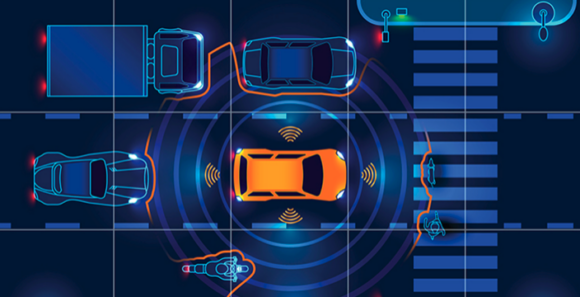The 5-Star Safety Rating Program that Americans use when shopping for new passenger vehicles “fails consumers” by not including collision-avoidance and other technology in the ratings and is approaching “near irrelevance,” National Transportation Safety Board Chair Jennifer Homendy said.
In March, the National Highway Traffic Safety Administration asked for comments on changes to its New Car Assessment Program, commonly known as the 5-Star Safety Rating Program. The NTSB chair responded with a 13-page letter detailing ways to improve the program.
“Today, safety is not only about crashworthiness, but increasingly about crash avoidance,” Homendy said. “Yet many of these life-saving technologies the NTSB has been recommending for decades are not included in the 5-Star Rating Program. How is it possible that a car in the U.S. with none of the currently available collision-prevention technologies could get a top rating? It’s unacceptable.”
The rating system, first introduced in 1979, gave automakers an incentive to continually improve the crashworthiness of vehicles. As a result, most passenger vehicles manufactured today receive top crashworthiness scores.
But crash-avoidance technologies are not included in the rating system and are not on the window labels found on new cars at the dealership. Since issuing its first recommendation in 1995 related to collision avoidance technology, the NTSB has made over 25 recommendations to NHTSA related to this technology. The letter also noted that NHTSA is years behind in implementing a law Congress passed requiring NHTSA to include crash-avoidance technologies on the window labels by 2016.
Although NHTSA identified three safety technologies that meet the agency’s recommendation criteria and lists them on its website, the core request from the NTSB and Congress — to rate the performance of these safety technologies and include the ratings in the 5-Star Rating System — is still undone.
Chair Homendy’s letter also compares the NHTSA rating system unfavorably to the one used in Europe, which includes ratings of forward collision warning and automatic emergency braking systems, lane departure warnings, lane keep assist systems, driver monitoring, and other active and passive component designed to also protect pedestrians and bicyclists.
“Technologies that the European Union started to mandate this year, that Euro NCAP is starting to rate next year, and that the NTSB has been recommending be required for years, are only now starting to be considered by NHTSA,” Homendy wrote. “The NCAP program will not fulfill its purpose of informing consumers unless NHTSA can keep pace with the emergence and development of safety technologies.”
Was this article valuable?
Here are more articles you may enjoy.


 Survey Shows Distracted Drivers Overconfident: 20% Text While Driving, 15% Use Social Media
Survey Shows Distracted Drivers Overconfident: 20% Text While Driving, 15% Use Social Media  Lawsuits Against BP Over Health Impacts of Deepwater Horizon Cleanup Stalled in Court
Lawsuits Against BP Over Health Impacts of Deepwater Horizon Cleanup Stalled in Court  Uber Spends Six Figures on Ads in Latest NY Insurance Reform Push
Uber Spends Six Figures on Ads in Latest NY Insurance Reform Push  US Regulator Takes Initial Steps to Boost Self-Driving Cars
US Regulator Takes Initial Steps to Boost Self-Driving Cars 